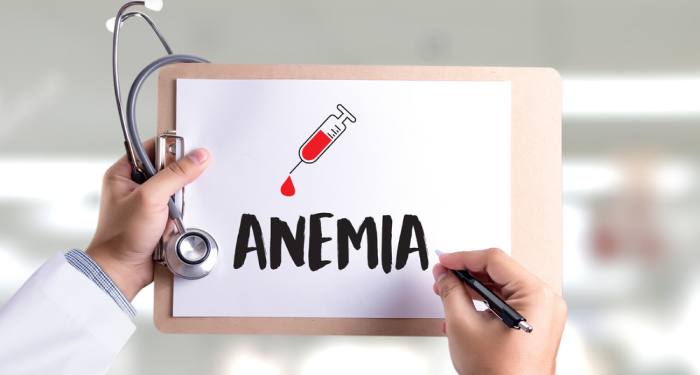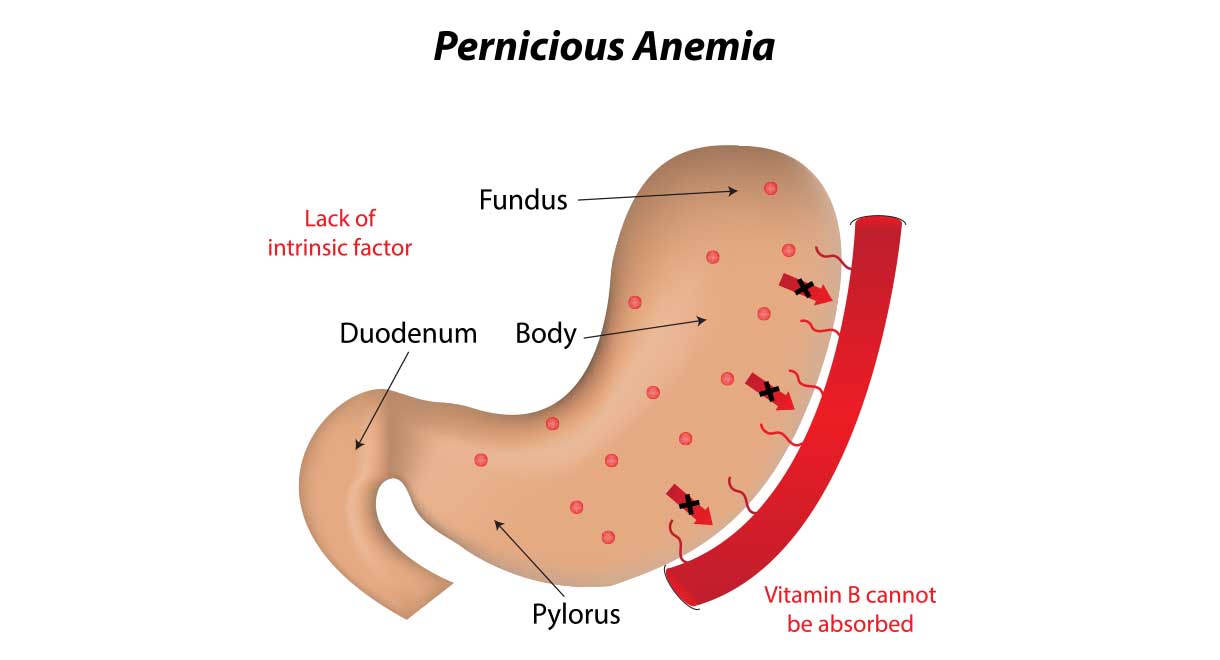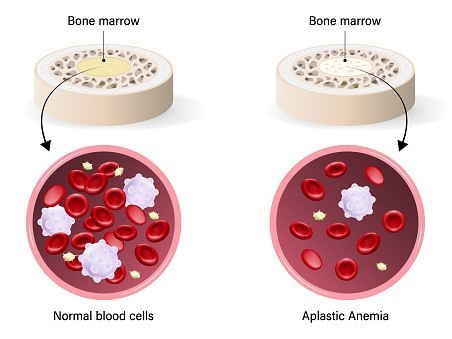INTRODUCTION :
Anemia can occur in anyone, regardless of age, race or ethnicity. However, some people are at higher risk of developing the condition, including those with cancer, autoimmune diseases, or heavy periods.
Treatment of mild to moderate anemia usually involves supplements or medications to help increase the number of red blood cells. More severe cases may require a blood transfusion or surgery.
Categories
There are several types of anemia. Some types are more common and easier to treat than others, but all can lead to complications if left untreated.
( i ) Iron Deficiency Anemia
If you are deficient in iron, you are at risk of developing iron deficiency anemia. This type of anemia usually occurs when there is not enough iron in the diet. Affects 30%of women and children. Low iron figures can occur because the body is difficult to absorb iron due to blood loss or medical condition.
This type of anemia rarely cause death, but this can cause significant complications:
symptoms and possible complications include:
- Fatigue
- Headache
- Anxious foot syndrome, a state that allows the legs to move enough untreated
- Heart disease
- Early work (36 weeks ago) and pregnancy complications such as low weight
Iron deficiency anemia may not be able to worsen or treat other medical disorders.
( ii ) Pernicious Anemia
A Pernicious anemia is a car immune disease, so the body means that the body is incorrectly attacked by a healthy cell. This type of anemia is relatively rare. Globally, it affects less than 2% of people over the age of 60.
People with pernicious anemia have low levels of vitamin B12. Your body needs vitamin B12 to make healthy red blood cells and to keep your nervous system working properly. Pernicious anemia causes red blood cells to become larger than normal and not divide efficiently. These blood cells have difficulty leaving the bone marrow (where blood is made), so they cannot carry oxygen around the body.
If left untreated, pernicious anemia can cause serious complications. Bleeding and infection can occur, as well as permanent brain or nerve damage. Babies born to people with vitamin B12 deficiency are more likely to have developmental delays and birth defects, especially brain and spinal cord defects.
( iii )Aplastic Anemia
Aplastic anemia is a rare but serious blood disorder. This happens when the bone marrow doesn't make enough new blood cells to keep the body working properly. This type of anemia, which affects about 2 million people in the United States, is usually caused by damage to stem cells in the bone marrow. This causes a decrease in the number of red blood cells, white blood cells and platelets in the bone marrow. Aplastic anemia is common because the immune system attacks and destroys stem cells.
If aplastic anemia is not treated, it can lead to serious complications such as heart failure and heart failure. It also increases the risk of developing bleeding problems, leukemia (a type of cancer that starts in the blood cells), and other serious blood disorders.
Aplastic anemia is a life-threatening disease with a very high mortality rate. If the disease is left untreated, 70% of people will die within a year. For those under 20, the five-year survival rate is about 80%.
( iv ) Hemolytic anemia
In hemolytic anemia, red blood cells are destroyed faster than they are replaced. There are several types of hemolytic anemia. It can be acquired or inherited, and the cause is not always known.1 This type of anemia is rare, affecting about 1 to 3 in 100,000 people each year. He can be of any age.
Anemia symptoms
Symptoms of anemia can vary depending on the severity of the condition and how quickly it progresses. People with mild anemia may not have all the symptoms.
Early signs of anemia include pale skin, weakness, or fatigue. When anemia advances you can feel the following symptoms:
- Ducking
- I heard the desert
- Sail
- Fast forearm
- Rapid breathing
- Symptoms such as swelling of language, oral drying and wounds (small wounds)
- Owlenchy (Breaking, Spoon Spot)
- Hair loss
- The convulsions of the feet
- Breath
- Brain lesions
In principle, at least feels that anemia related to anemia should work hard to transmit the wealthy body. These symptoms depend on arifman (heart rate) and heart failure, heart and heart failure.
What is the cause of anemia?
( i ) Low red blood cell production:
Nutritional deficiencies or malabsorption of nutrients can reduce the body's ability to produce red blood cells.
( ii ) Degree of red blood cell destruction:
Chronic conditions can affect the body's ability to produce red blood cells or even cause red blood cells to be destroyed.
( iii ) Blood loss:
Blood loss from menstruation or internal bleeding (such as from the stomach or colon) can also cause anemia.
Risk Factors
A variety of conditions and genetic factors can increase your risk of developing anemia. Risk factors are the following:
- Low season, vitamin B12 or folic acid diet
- Frequent donation
- Strict
- Task
- Cancer
- Oath
- Fiber
- Colon cancer
- Auto
- Inheritance
- Diseases of blood cells (SCD), including the condition of hemoglobin, are the solid and crescent moon of the red blood cells.
- Genetic disorders that create metabolic disorders, such as glucose -6 -dehydrogenase, forced to break sexual cells in red globes
- Often affect toxins like pesticides
- Radiation and chemotherapy
- Virus infections, such as Epsin Barr (EBV), ie physical liquids, such as saliva, for example, virus infections, such as general and highly contagious herpes viruses
In general, the diagnosis of anemia begins with a physical examination and begins by finding pale and broken nails. Your medical provider requires your troops, diets or other families.
Also, order blood tests and consider other test options. Blood tests may include:
( i ) Complete blood count (CBC):
A blood test that provides information about several indicators, such as red blood cells, white blood cells, and platelets. This is one of the most common ways to check for anemia. Mean corpuscular hemoglobin concentration
( ii ) MCHC:
A blood test that measures the amount of hemoglobin in red blood cells relative to cell volume.
( iii ) Mean corpuscular hemoglobin (MCH):
A blood test that measures the average amount of hemoglobin in red blood cells. Hematocrit: A blood test that measures the percentage of red blood cells in the blood.
( iv ) Mean corpuscular volume (MCV):
A blood test that measures the average size of red blood cells
Other possible tests and diagnostic tools include:
( v ) Bone marrow tests:
Two bone marrow tests (aspiration and biopsy) can detect anemia and are often done together. Aspiration is a procedure that extracts a small amount of fluid from the bone marrow. The doctor will then do a biopsy to remove a small amount of bone marrow tissue. The purpose of a bone marrow test is to determine whether the bone marrow is healthy and producing normal amounts of blood cells.
Urinalysis: Urinalysis can help determine if your kidneys are working properly. It can also detect urinary bleeding.
Genetic testing: Genetic testing determines if you have a gene that affects how your body makes red blood cells.
Other diagnostic tests: Colonoscopy can detect colonic bleeding. Your doctor may also consider an endoscopy to look for bleeding in the esophagus, stomach, or small intestine. For an endoscopy, your doctor or surgeon inserts a flexible tube with a camera called an endoscope into your body.
Treatment Of Anemia
Treatment of anemia depends on the cause and severity of the condition. Some types of anemia can be treated with dietary changes and supplements. More severe anemia may require transfusions, blood or bone marrow transplants, or surgery.
The main goals of treatment are to increase the number of red blood cells or hemoglobin levels, improve oxygen levels in the blood, relieve symptoms and improve quality of life. Other treatment goals include treating the underlying condition causing the anemia and preventing complications, such as heart or nerve damage.
1. Food Pattern
Adding iron-rich foods to your diet is one of the most important strategies for treating early or mild iron deficiency anemia. Iron is found naturally in a variety of animal and plant foods. Heme iron is a type of iron found in animal products such as meat, poultry, seafood and eggs. Non-heme iron is found in plant foods. The body absorbs about 25% of the heme iron from food and about 17% of the non-heme iron from food.
Heme iron also improves the absorption of non-heme iron. Therefore, people who do not consume animal sources of iron often need to consume more plant-based iron sources or take iron supplements to meet their daily requirements. For vegetarians and vegans, the recommended daily dose of iron is approximately 1.8 times higher.
Foods rich in iron include:
- Beef
- Bird meat
- Egg
- White beans
- Dark leafy vegetables
You can consume it with foods rich in vitamin C, such as broccoli, oranges and strawberries. Vitamin C helps the body absorb iron.
2. Oral pills
The most common way to treat iron deficiency anemia is to take iron by mouth (oral pills). Dosage depends on factors such as age, iron deficiency, and ability to tolerate potential side effects. In more severe cases, iron therapy (intravenous or intravenous iron) is used. The advantage of this method is that it only takes one or two sessions to replenish the iron in your body.
For people with pernicious anemia, health care providers may use B12 supplements or injections to restore vitamin B12 levels. Nasal gels and sprays can be useful options for people who have difficulty swallowing pills.
Dietary supplements are minimally regulated by the FDA and may or may not be right for you. The effectiveness of supplements varies from person to person and depends on many variables, including type, dosage, frequency of use, and interactions with current medications. Ask your doctor or pharmacist before starting any supplement.
3. Medication
Medicines that treat the underlying condition causing the anemia can also treat the anemia itself. If a medication you are currently taking causes anemia, your doctor may adjust or change your medication to reduce your symptoms.
If you have aplastic anemia or hemolytic anemia, you may be prescribed drugs that suppress your immune system, called immunosuppressants. For aplastic anemia, doctors may prescribe drugs that stimulate the bone marrow to make red blood cells, such as erythropoietin therapy (injections of a hormone called erythropoietin).
4. Blood Transfusion
If you have a severe form of iron deficiency anemia, your doctor may recommend a blood transfusion to quickly increase your iron and red blood cell levels. This procedure usually takes 1 to 4 hours and includes pre- and post-procedure monitoring. Blood transfusions also help treat aplastic anemia.
5. Blood And Bone Marrow Transplant
For people with severe aplastic anemia, their health care provider may recommend replacing damaged bone marrow stem cells with healthy cells. During this procedure, high doses of chemotherapy (a drug used to treat cancer) and radiation destroy ineffective donor stem cells before they are transplanted into the body. This type of transplant works best for people who received a donation of a closely related cell type. Mainly used in children and adolescents.
6. Surgery
Surgery may be necessary for internal bleeding that causes anemia. People with hemolytic anemia may have surgery to remove the spleen because it destroys abnormal blood cells. This approach is rarely used.
Prevention
Some types of anemia can be prevented, especially if they are caused by vitamin and mineral deficiencies. Other types of anemia are long-term conditions that require ongoing treatment and management.
Adding iron-rich foods to your diet can help prevent iron-deficiency anemia. This is especially true when consumed with foods rich in vitamin C. You can also try to avoid potential factors that increase your risk of anemia. For example, some types of anemia are caused by certain foods or cold temperatures. If you have hemolytic anemia, you can reduce your risk of infection by washing your hands often and keeping your distance from people who may be sick.
If you have heavy periods, talk to your gynecologist about how to treat the condition before anemia occurs.
Related Terms
There are several conditions associated with anemia, most of which affect the heart. For example, anemia is common in acute coronary syndromes (ACS), a group of conditions caused by sudden or severe restriction of blood flow to the heart.
Other common associated conditions include:
Heart failure: Anemia is common in heart failure. Studies have shown that this is due to the complex relationship between iron deficiency, kidney disease and cytokine production. Cytokines are proteins that help fight infection.
High blood pressure: Anemia is common in people with hypertension (high blood pressure).
Chronic obstructive pulmonary disease (COPD): Anemia is common in people with COPD, a chronic lung disease that damages the lungs and makes breathing difficult. Up to 33% of COPD patients have anemia.
Hypothyroidism: Anemia is common in people with a thyroid condition, such as hypothyroidism (underactive thyroid). The reason for this association remains unclear.
Chronic kidney disease (CKD): Certain factors can increase your risk of developing anemia from CKD. For example, a 2020 meta-analysis of 28 studies found that women with kidney disease were 36% more likely to develop anemia.
Rheumatoid arthritis: Anemia is common in people with rheumatoid arthritis (RA), an autoimmune disease that causes inflammation of the joints. Estimates of the number of people with both conditions vary, but range between 30 and 60 percent.
#lives with anemia
Anemia can often be treated with nutritional supplements, lifestyle changes, and medications. Early treatment can improve energy levels, increase activity and improve overall quality of life. This is especially true if you have mild or moderate anemia. However, some types of anemia can be serious, long-lasting, and even fatal. If left untreated, some types of anemia can cause multiple organ failure and eventually death.
If you think you may have anemia, call your doctor. People who receive timely and appropriate treatment can live long and healthy lives.
FAQs
1. Can anemia be prevented through diet alone? Yes, certain types of anemia, especially iron-deficiency anemia, can be prevented or mitigated through a well-balanced diet rich in iron, vitamin B12, and folic acid. Including foods like red meat, leafy greens, and fortified cereals can contribute to maintaining healthy iron levels.
2. Is anemia a hereditary condition? While some types of anemia, like sickle cell anemia and thalassemia, have a hereditary component, not all forms of anemia are inherited. Genetic factors can influence an individual's susceptibility to certain types of anemia.
3. Are there specific groups more prone to anemia? Yes, certain groups are more susceptible to anemia. Pregnant women, individuals with chronic diseases, vegetarians, and those with a history of gastrointestinal disorders may be at a higher risk. Regular health check-ups can help identify and address potential anemia risks.
4. Can vegetarian diets lead to anemia? Vegetarian diets can be associated with a higher risk of iron-deficiency anemia since plant-based iron (non-heme iron) is less easily absorbed by the body than animal-based iron (heme iron). However, incorporating iron-rich plant foods and pairing them with vitamin C-rich foods can enhance iron absorption.
5. How long does it take to see improvements with treatment? The timeline for improvement in anemia varies depending on the type of anemia and the chosen treatment. With proper treatment, individuals may start to see improvements in symptoms like fatigue within a few weeks to a few months. It's crucial to follow the prescribed treatment plan and attend regular follow-ups.
6. What are the potential complications of untreated anemia? Untreated anemia can lead to various complications. Severe fatigue, impaired cognitive function, increased risk of infections, and cardiovascular issues are potential consequences. It's essential to seek medical advice for proper diagnosis and timely intervention to prevent complications.
Conclusion:
In conclusion, understanding anemia is the first step towards effective management and improved well-being. By recognizing the causes, symptoms, and adopting practical strategies, individuals can take control of their health and thrive despite anemia.






0 Comments